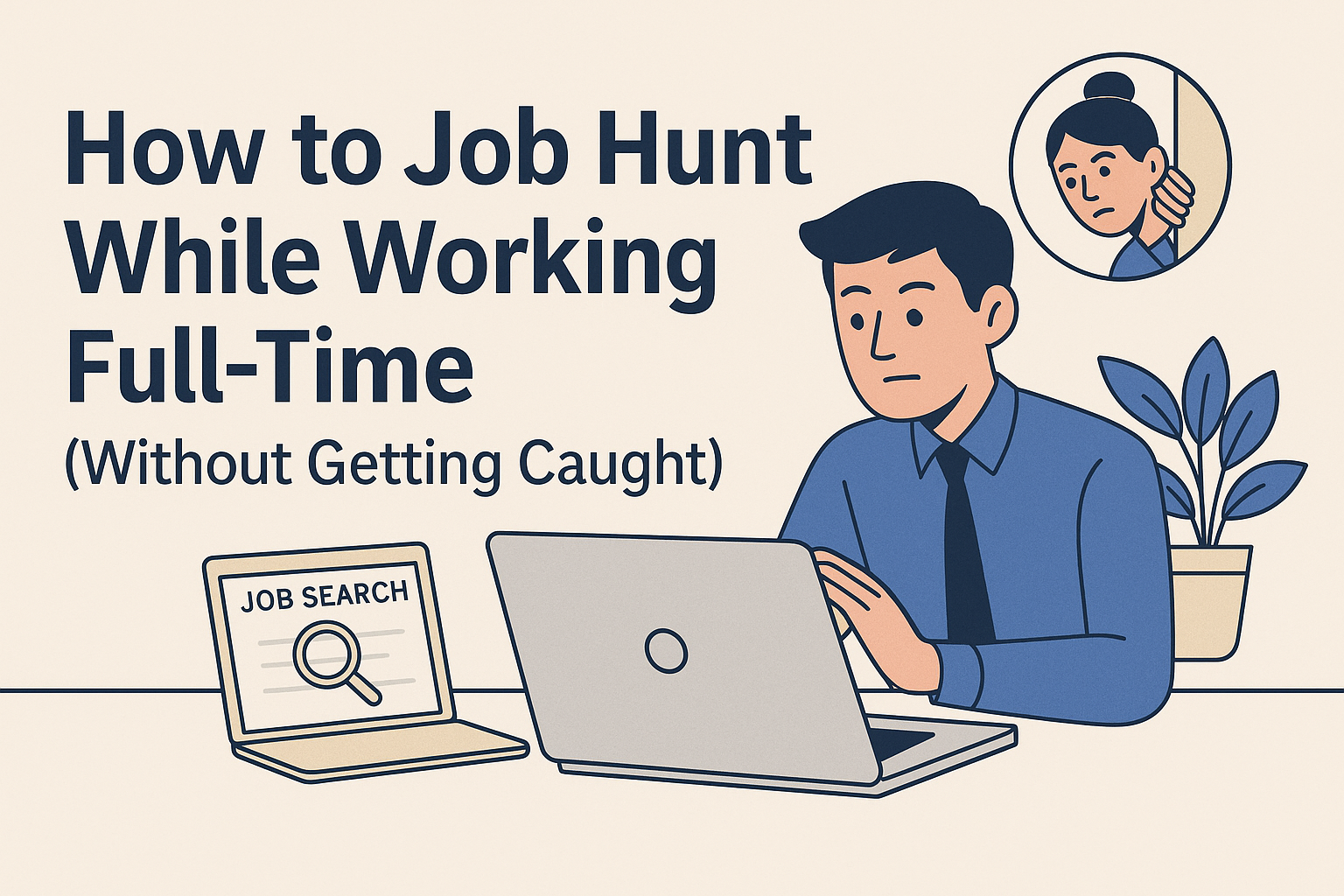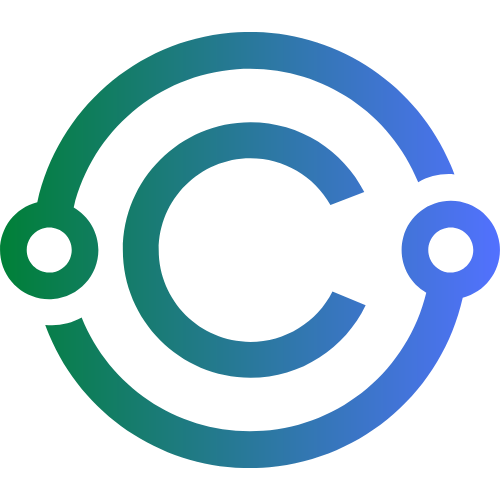How to Job Hunt While Working Full-Time (Without Getting Caught)

You’ve outgrown your current role, the company culture no longer fits, or maybe your job is at risk—and it’s time to move on. But searching for a job while working full-time is tricky. Between meetings, deadlines, and expectations of loyalty, how do you find your next opportunity without burning out or raising red flags?
Good news: With the right strategy, tools, and mindset, you can run a discreet and effective job search without jeopardizing your current role.
In this blog, we’ll walk you through:
- Why job hunting while employed is smart
- Step-by-step tactics to job search quietly
- How to use time efficiently
- When and how to network safely
- How to handle interviews during work hours
- What to do if your boss finds out
- A real case study
Let’s get you to your next role—strategically.
1. Why It’s Smart to Job Hunt While You’re Still Employed
✅ You don’t feel desperate—which makes you more confident in interviews
✅ You have negotiating power (you’re not in a rush)
✅ You can afford to be selective and wait for the right fit
Important: Don’t let guilt stop you. Loyalty is important—but your career comes first.
2. Set Clear Intentions First
Before updating your resume or clicking “Apply,” take a step back:
Ask yourself:
- What’s not working in your current job?
- What does your ideal next role look like?
- What salary, culture, and growth are you targeting?
Tool: Use Teal Career Paths or a Notion job search dashboard to map it out.
3. Don’t Job Search on Company Devices or Time
This is rule #1. If your employer tracks your activity or devices, they could find out.
✅ Use personal devices and private accounts
✅ Apply and message recruiters outside work hours
✅ Don’t store resumes or trackers on work computers
✅ Log out of Gmail or LinkedIn tabs when using office Wi-Fi
Pro tip: Use incognito mode or a separate browser profile for job searching.
4. Update Your LinkedIn Strategically
If you suddenly make big profile changes, it might raise questions.
✅ Update slowly over 1–2 weeks (headline, skills, experience)
✅ Turn off “notifications to network” in LinkedIn settings
✅ Use “Open to Work” visible only to recruiters
Tool: Jobscan LinkedIn Optimizer
5. Create a 30-Day Job Search Routine That Works
With limited time, consistency beats intensity. Try this weekly plan:
Monday: Apply to 3–5 targeted jobs
Tuesday: Message 2 new connections or potential referrers
Wednesday: Spend 30 minutes on LinkedIn engaging with posts
Thursday: Follow up on previous applications
Friday: Prep for interviews or portfolio updates
Weekend: Research companies and set alerts
Tool: The 30-Day Job Search Plan
6. Use Discreet Email and Resume Practices
✅ Use a professional personal email (not your work one)
✅ Use your full name in the email address (e.g., name.lastname@gmail.com)
✅ Don’t mention your current employer in online job boards unless required
✅ Remove your current work number from your resume
7. Tell the Right People—Quietly
You don’t have to go it alone—but you do need to be selective.
✅ Trusted former colleagues or mentors
✅ Friends in other companies
✅ Alumni connections
Be clear that you’re searching confidentially.
Message Example:
“Hey [Name], I’m quietly exploring new roles and thought of you because of your work at [Company]. I’d love to hear your insights if you’re open to a quick chat.”
8. How to Handle Interviews During Work Hours
It happens—you get an interview for your dream job…at 2 PM on a Wednesday.
✅ Try to schedule early mornings, lunch hours, or late afternoons
✅ Use PTO or personal time for longer interviews
✅ Don’t lie—say you have “an appointment” or “a personal commitment”
Virtual Tip: If interviewing from home, make sure your background is neutral and professional. Wear interview clothes even if it’s virtual.
Tool: Interview Warmup by Google
9. Use the “Stealth Mode” Job Boards
Some job platforms are built for private searches.
✅ Hired.com – You stay anonymous until interested
✅ Otta – Tracks only what you want
✅ Wellfound – Startup jobs with curated recommendations
10. Build Your Brand Quietly
✅ Comment thoughtfully on LinkedIn once or twice a week
✅ Share helpful content in your industry (without saying you’re job hunting)
✅ Keep your tone curious and growth-focused
Don’t: Announce “I’m looking for new opportunities” on your public feed.
11. What If Your Boss Finds Out?
It’s rare, but it happens.
If they ask:
- Be calm and honest: “I’m exploring what’s next in my career.”
- Avoid blaming the company or complaining
Be prepared: If you’re fired or forced to resign, have:
- Updated resume ready
- Emergency contacts and networking warm-ups
- Financial buffer (if possible)
12. Case Study: How Leena Switched Jobs While Managing a Team
Background: Leena, a marketing lead in London, was exhausted. Her role had expanded, but the pay and growth hadn’t.
Challenge: She managed a team of 5 and couldn’t risk anyone finding out.
What she did:
- Created a 6-week plan with dedicated 45-minute evening blocks
- Updated her LinkedIn over 3 weeks (quietly)
- Networked with 10 alumni contacts
- Took 2 interviews during lunch, 2 during half-days off
Result: She landed a growth role at a healthtech startup—with a 20% raise.
Takeaway: Planning and discipline make stealth job hunting manageable.
13. Your Exit Strategy: Don’t Burn Bridges
Once you get the offer:
✅ Don’t post about it until your current notice period is complete
✅ Give proper notice (2 weeks minimum)
✅ Offer to help with handovers or documentation
✅ Send thank-you notes to your manager and team
Even if your current job was frustrating, leave with class.
Final Thoughts: It’s Not Just Possible—It’s Smart
Job hunting while working full-time is an art. But if you:
- Prioritize consistency
- Respect your current employer’s boundaries
- Build quiet momentum through smart networking and applications
…you’ll set yourself up for a smooth and strategic career move.
Remember: You don’t owe your company silence. You owe yourself the chance to grow.

